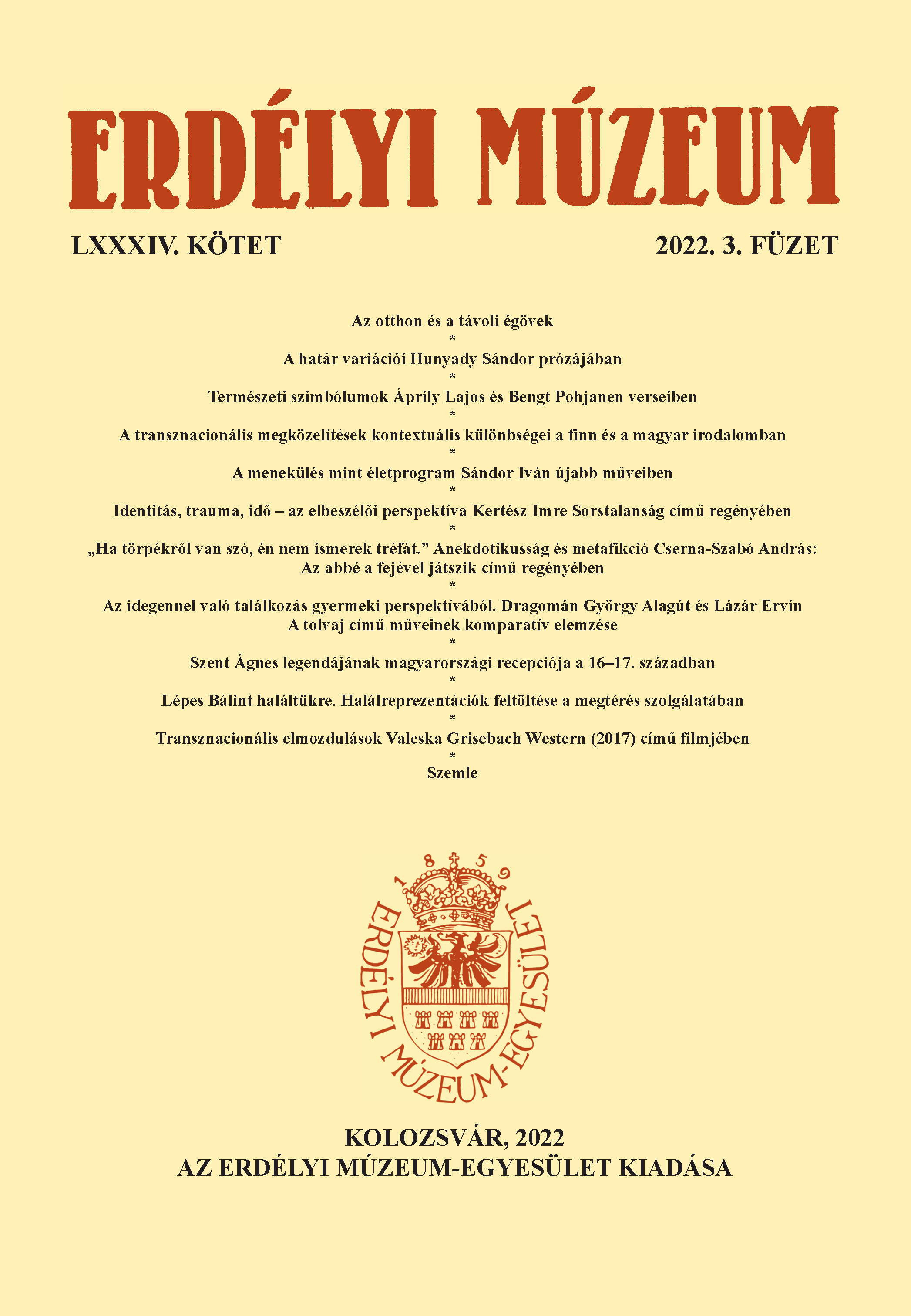Szent Ágnes legendájának magyarországi recepciója a 16−17. században
The 16th-17th Century Reception of the Legend of St. Agnes of Rome in Hungary
Author(s): Melinda SzmutkuSubject(s): Cultural history, Hungarian Literature, 16th Century, 17th Century
Published by: Erdélyi Múzeum-Egyesület
Keywords: virgin martyr; legend; codex; compilations; cult of saints;
Summary/Abstract: St. Agnes of Rome’s cult remained alive in the Middle Ages as well, the story of the saint’s martyrdom was included in collections of sermons and legendary in Hungary. The earliest Latin texts (biography of Agnes by St. Ambrosius, legend in the Legenda Aurea) after small adjustments were included as compilations in 16-17th century Hungarian collections. The creation of text versions is also influenced by the content of the codices that contain them, the content of the collections of sermons, the topics of the sermons, the legends of other saints that can be read in the codices, and also time. In this study, I trace the changes that the Hungarian compilations underwent compared to the Latin legend in the Legenda Aurea, what they were able to preserve from the Latin legend in the Legenda Aurea, and what elements of the plot were later added to the Hungarian versions.
Journal: Erdélyi Múzeum
- Issue Year: LXXXIV/2022
- Issue No: 3
- Page Range: 107-120
- Page Count: 14
- Language: Hungarian

